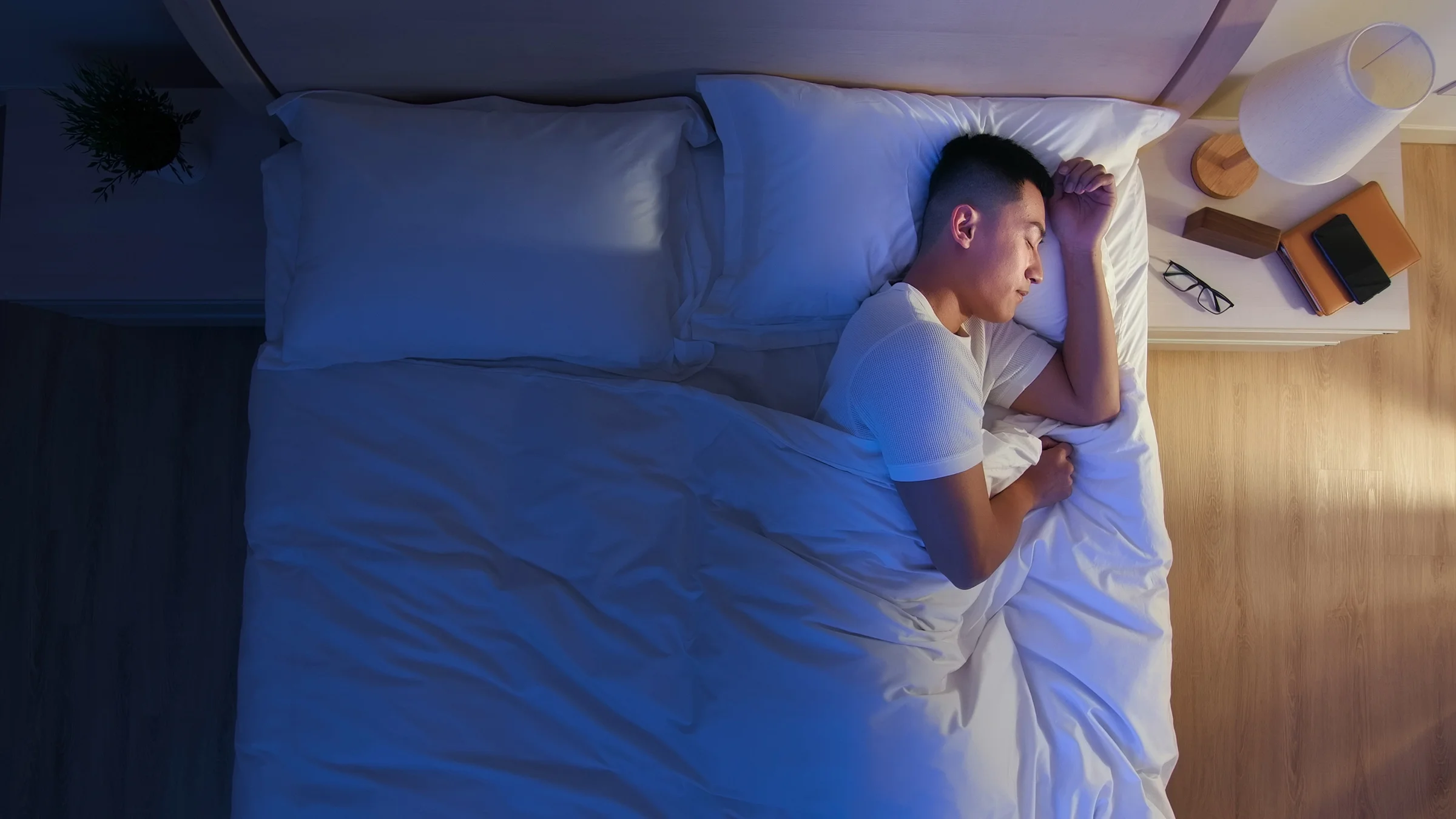Key takeaways:
Dream research made headlines in the 1950s when vivid dreaming during REM (rapid eye movement) sleep was first discovered.
There’s a popular misconception that dreaming only happens during REM sleep because of that discovery.
Today, we know that dreaming can occur during the early, non-REM stages of sleep as well.
The claim that dreaming only happens during REM (rapid eye movement) sleep spread widely in the early 1950s. Research has since shown us otherwise. But why does the claim that dreaming only happens during REM sleep persist today?
To understand this further, let’s take a look at what dreaming is, the stages of sleep, and what the science says about when you dream.
What is dreaming?
Merriam-Webster defines dreaming as “a series of thoughts, images, or emotions occurring during sleep.” But G. William Domhoff, who has been studying dreaming for over 60 years, says there are over a dozen definitions for the word “dreaming.”
Search and compare options
In an interview with GoodRx, Domhoff says that dreaming is when the imagination runs freely, unlike the parts of our brain that help us stay focused.
What are the stages of sleep?
Your body goes through four stages of sleep after you nod off. The four stages equal one sleep cycle, which typically lasts about 90 minutes.
Non-rapid eye movement, also known as NREM or non-REM, occurs during the first three stages. Rapid eye movement or REM sleep happens during stage 4.
The four stages of sleep include:
Stage 1: The sleep cycle’s first stage is the lightest. Your heart rate and breathing slow down and your muscles relax. But you’re still alert enough to be awakened easily.
Stage 2: In this stage, your heart rate and breathing slow down even more, and your body temperature drops. You’re less likely to wake up even though you’re still in a lighter sleep phase.
Stage 3: Here, your body falls into a deep, restorative sleep. This is important for healing muscles, promoting growth and development, and boosting immunity. This stage helps you feel refreshed when you awaken.
Stage 4: Better known as REM sleep, stage 4 is when your brain becomes active, and your eyes move quickly behind your eyelids. Your heart rate and blood pressure rise, and your breathing becomes faster and irregular. When you dream in this stage, your arms and legs cannot move. This may sound scary, but it actually protects you from acting on your dreams.
Claim: Dreaming only happens in REM sleep
You’re not alone if you think dreaming only happens during REM sleep. Domhoff blames early research for promoting the myth. And it goes all the way back to before scientists even knew what REM sleep was.
Read more like this
Explore these related articles, suggested for readers like you.
It started in the 1950s when Eugene Aserinsky, then a physiology student, ran an experiment on his 8-year-old son. Aserinsky hooked up his son to a machine that measured brain activity. As the boy slept, the machine recorded his “rapid eye movement” — the first scientific report of REM.
Aserinsky’s discovery took off in the news and elevated the study of sleep. Further sleep studies on adults followed suit. During these studies, participants were awakened during REM sleep cycles. They were able to describe vivid dreams and a new theory emerged: REM and dreaming were somehow connected.
“We believed back then that we only dream during REM sleep, so therefore REM sleep must only be for dreaming,” says Domhoff. “Further research proved us wrong. We often dream during REM sleep, but we don’t need to be in REM sleep to dream.”
When dreaming during other stages of sleep was discovered in the early 1960s, it was too late to reverse earlier enthusiasm for the REM-dreaming connection, Domhoff recalls. “The idea that REM was [the same as] ‘dream sleep’ was hard to undo.”
What does the science say?
There’s lots of evidence that dreaming can occur in other sleep stages. Scientists first recorded dreaming during non-REM sleep in 1961. Since then, many more reports have been presented.
In one study, researchers awakened sleep subjects during the first few minutes of their sleep cycle. Study participants were asked to describe their dreams, if any. More than half of them were able to do so.
Another study found that lucid dreams can occur in both REM and non-REM sleep. A lucid dream is when you know you’re dreaming during a dream. This study suggests that even though lucid dreaming mostly occurs during REM, it can also happen during stage 1 and possibly stage 2 of your sleep cycle.
So, can I dream during non-REM sleep?
Based on the research, you can dream during any sleep stage, including REM and non-REM sleep. However, the types of dreams you have may be different based on the stage.
Research points out differences between REM and NREM dreams:
REM sleep dreams are easier to remember compared to dreams in other sleep states.
REM dreams are often longer and include more unique words.
REM dreams are rated as more vivid, emotional, and physically engaging.
Some researchers describe REM dreams as more complex in their story-like structure.
Even though dreaming and REM sleep are so closely tied, these findings support that dreaming during non-REM stages is indeed possible.
References
Brown, C. (2003). The stubborn scientist who unraveled a mystery of the night. Smithsonian Magazine.
Domhoff, G. W., et al. (1999). Much ado about very little: The small effect sizes when home and laboratory collected dreams are compared. Dreaming.
Fiske, D. W., et al. (1961). The functions of varied experience. The American Journal of Psychology.
Martin, J. M., et al. (2020). Structural differences between REM and non-REM dream reports assessed by graph analysis. PLOS One.
National Sleep Foundation. (2020). What are the sleep stages?.
Nieminen, J. O., et al. (2016). Consciousness and cortical responsiveness: A within-state study during non-rapid eye movement sleep. Scientific Reports.
Stumbrys, T. (2012). Lucid dreaming during NREM sleep: Two case reports. International Journal of Dream Research.
UC Santa Cruz. (n.d.). G. William Domhoff. Psychology.

Why trust our experts?





















